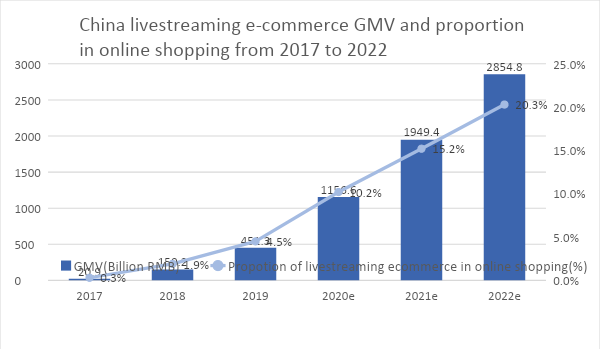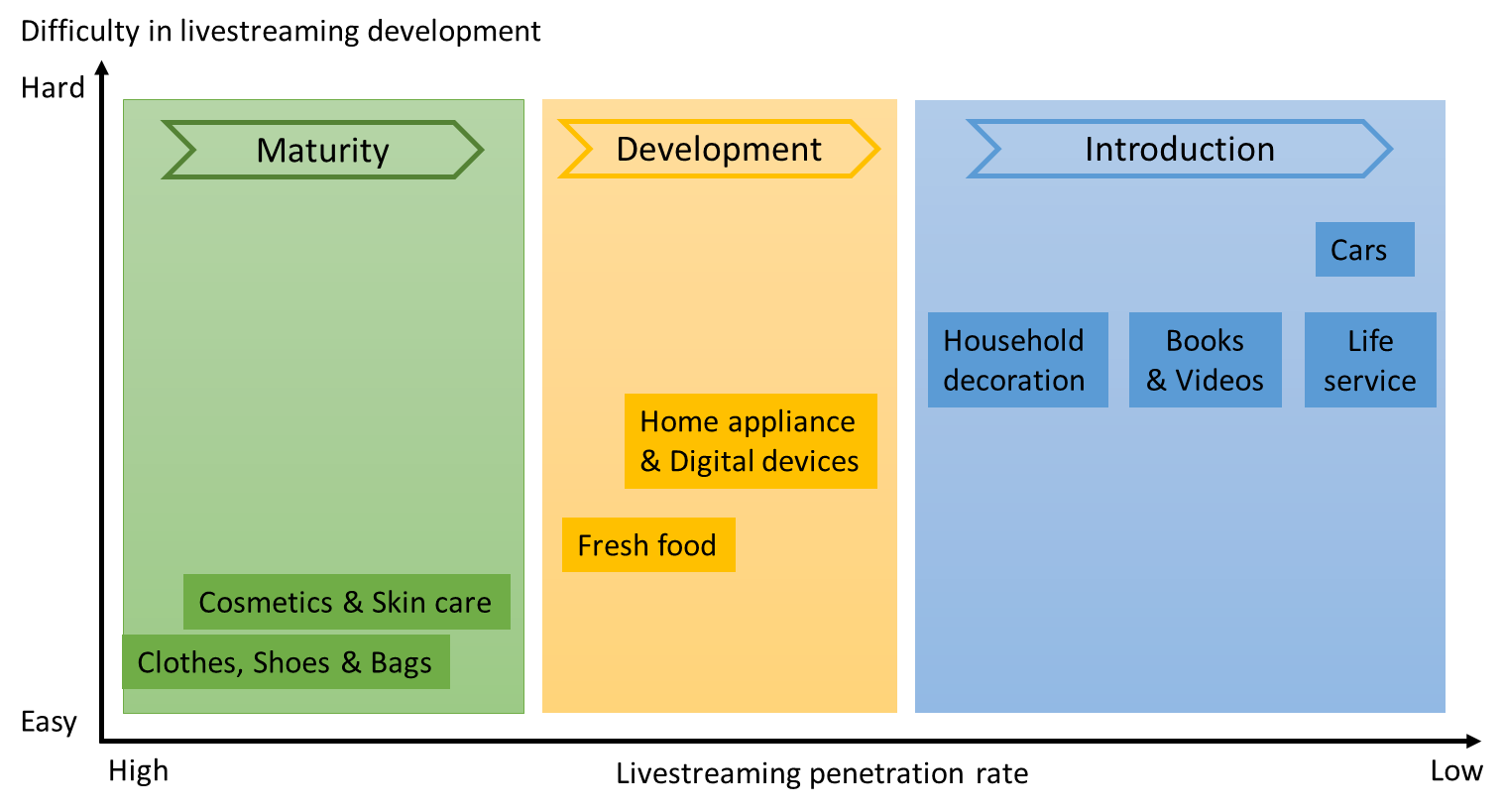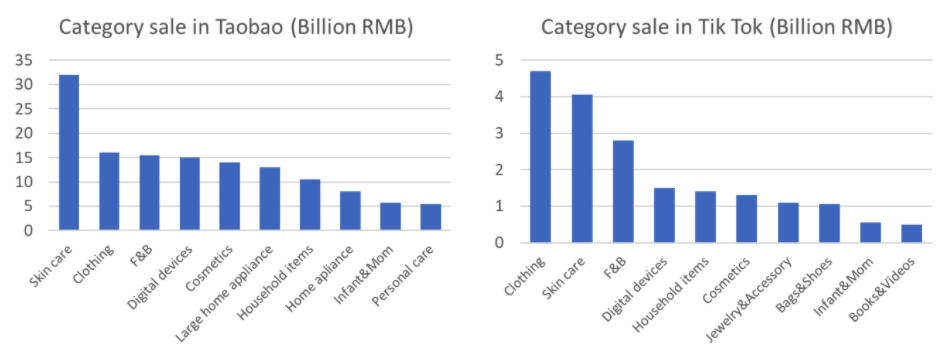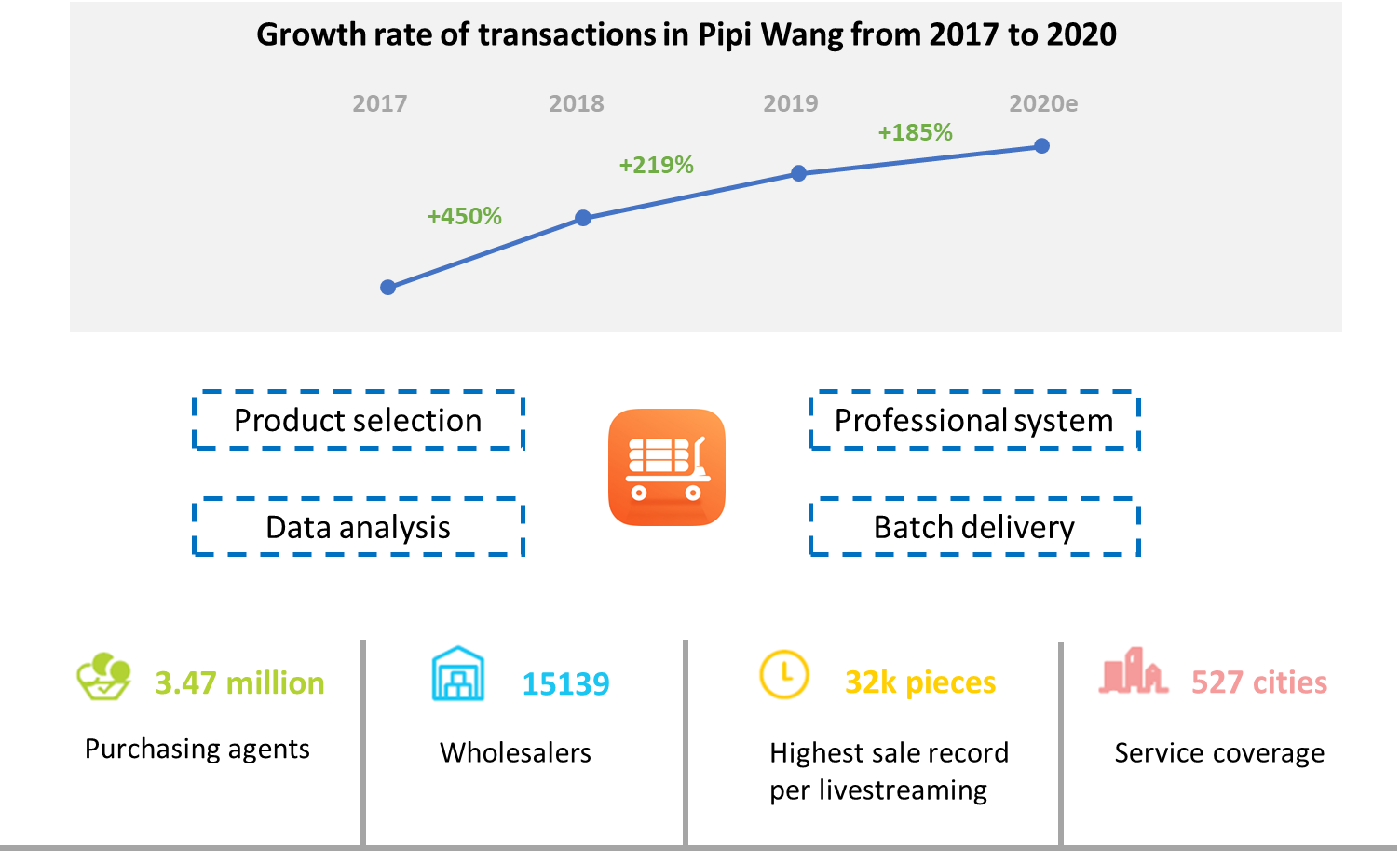In the first two decades of the 21st century, China has shifted from the PC era to the mobile internet era and is currently transitioning to the industrial internet era. This opens up an online ecosystem for the whole industrial supply chain, thereby creating a new way for consumers to shop, namely e-commerce.
E-commerce, as a sector, has matured within the Chinese economy, and consumers today demand much more than attractive deals and a swift shopping experience. Enter livestreaming e-commerce. How did this new way of commerce become so wide-spread in China, and where is it headed? We break down what this way of shopping is, and where it is headed.
The Changing Dynamics between Consumers and Commodities
Traditionally, ‘consumers search for commodities’, while China is defining a new relationship between the two, in a way that ‘commodities search for consumers’. A typical e-commerce shopping experience is what is referred to as “strong purpose shopping”, where consumers have certain needs, search for products on platforms and compare deals before checking out. As more and more platforms have sprung up, the cost to attract customers to websites has gone up, giving birth to “e-commerce content”.
Social media outlets in China have massive engagement and mass-market adoption, so merchants have the opportunity to directly communicate with their audience through attractive visuals & insightful content. Content e-commerce provides an interactive experience for audiences to discover and purchase new products, especially considering the ‘strong sociability (sharing and virality)’ at the core of social media platforms like Wechat and Douyin (Chinese equivalent of Tik Tok). The chinese social media giants are capitalising on “种草” or “zhongcao” (literally means “planting grass”), which refers to consumer’s tendency to purchase products after having been engaged by the content they consume.
The latest trend in e-commerce is livestreaming e-commerce, eliminating the process of crafting promotional content and then advertising to users, as the interaction between consumers and products happens in real-time. This modern and swift form of commerce started in 2016, with Mogu Street, and went on to be incorporated by major online shopping platforms, including Taobao and JD.com. Added to that, social media platforms, most prominently TikTok, are merging e-commerce with their existing livestreaming functionality. This nascent industry saw explosive growth in 2019 and 2020, when GMV (Gross Merchandise Value) exceeded 1 trillion RMB. The COVID-19 pandemic only led more Chinese consumers to try out this new way of shopping.

Data source: iResearch
In short, livestreaming e-commerce in China is here to stay, and is gaining the attention of consumer companies around the world. Recently, Walmart gained tremendous success with their livestreaming shopping event on TikTok.
KOLs and KOCs
Who hosts these livestreams? There are two kinds of people who typically host a livestreaming event — a KOL (key opinion leader) and a KOC (key opinion consumer).
- A KOL is seen as a trusted expert in their field, and they are respected for their knowledge, such as celebrity influencers, movie stars and fashion icons.
- A KOC is an average consumer, who is able to connect with other consumers by sharing thoughtful and honest product reviews.
What products are sold on livestreaming e-commerce?
This mode of moving products and services is still evolving, and so it currently caters to certain product categories better than others, as shown below. Fashion accessories and cosmetics are ideal for this medium as consumers feel compelled to try out new products, seeing influencers endorse them. More high-ticket items like home appliances are generally bought after comparing multiple products, and are sold primarily through brick and mortar stores. Product categories like vehicles and life services are also penetrating into livestreaming e-commerce.

Data source: iResearch
Taobao vs TikTok
Out of all the livestreaming e-commerce platforms in China, Taobao is the largest player, while TikTok is growing the fastest. Taobao is mainly an e-commerce platform, while TikTok is a short-form video platform, and so the journeys of their customers, from discovering to purchasing a product, is different.
Users on Taobao are there with a very clear intention to browse products and buy them, and so livestreaming serves as an additional layer to the e-commerce experience. As part of learning more about a product, users can tap in to a relevant live-stream, giving them more certainty before checking out.

Taobao livestreaming — Customer journey
Users of TikTok have a very different gateway to livestreaming e-commerce, as they are usually there to be entertained by short-form video content by creators. As creators become more popular and have a sizable following, they may go on to host an e-commerce live-stream, where they promote certain products and services. While consumers initially did not open their TikTok app with the intention to make a purchase, they may end up doing so as they watch their favorite creator endorse an exciting product.

TikTok livestreaming — Customer journey
Although the customer journeys vary considerably between these two platforms, the types of products being sold on both Taobao and TikTok are very similar. Based on the sales data of livestreamers that have achieved GMV of more than 500,000 RMB, the most popular types of products sold, according to Xiaohulu, are clothing and cosmetics and F&B products.

From B2C to B2B
Today, livestreaming e-commerce predominantly connects consumers to merchants (B2C). There is tremendous potential for this mode of selling to be incorporated in the B2B space, accelerated by manufacturing constraints brought about from the pandemic. It is far more complex, given the number of stakeholders involved, from manufacturers to forwarding agents to retailers. Typically, there is a lack of personalisation in B2B transactions. Pipi Wang, a wholesale e-commerce platform for clothes, is an example of a platform that has implemented livestreaming for business consumers, and has seen notable success.

Data source: iResearch
The future of livestreaming e-commerce
As 5G becomes mainstream, the content users consume on their phones will evolve, potentially from video to Augmented Reality (AR) or Virtual Reality (VR). The livestreaming e-commerce could soon be even more engaging and lively, as users could possibly walk through stores with their favorite influencers and even try on make-up or clothes in real time.
The entire livestreaming space is still new and is constantly evolving. As it becomes clear that the model is working, it is prone to misuse, since businesses may mislead consumers through the online content or ship lower quality products than what was shown. Chinese regulators are expected to closely monitor the livestreaming market, so platforms, businesses and influencers can expect more regulation in the near future. On the other hand, it is getting more challenging for newer businesses to crack into the livestreaming market as incumbents dominate consumers’ attention. We will have to see how livestreamers creatively use the platform in the near future to promote products across sectors.








